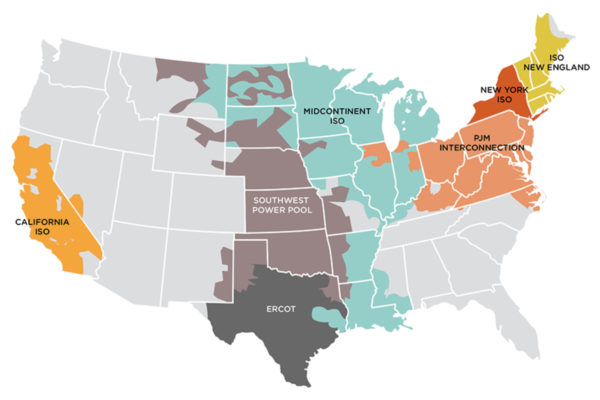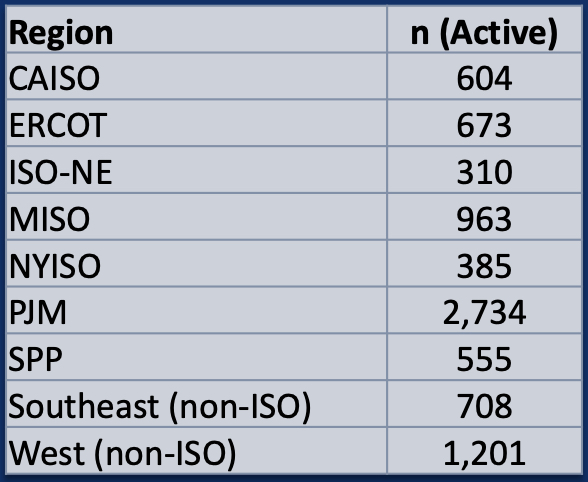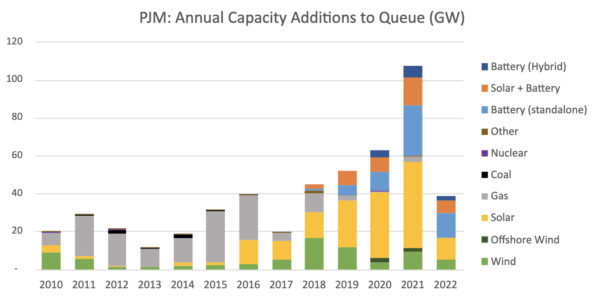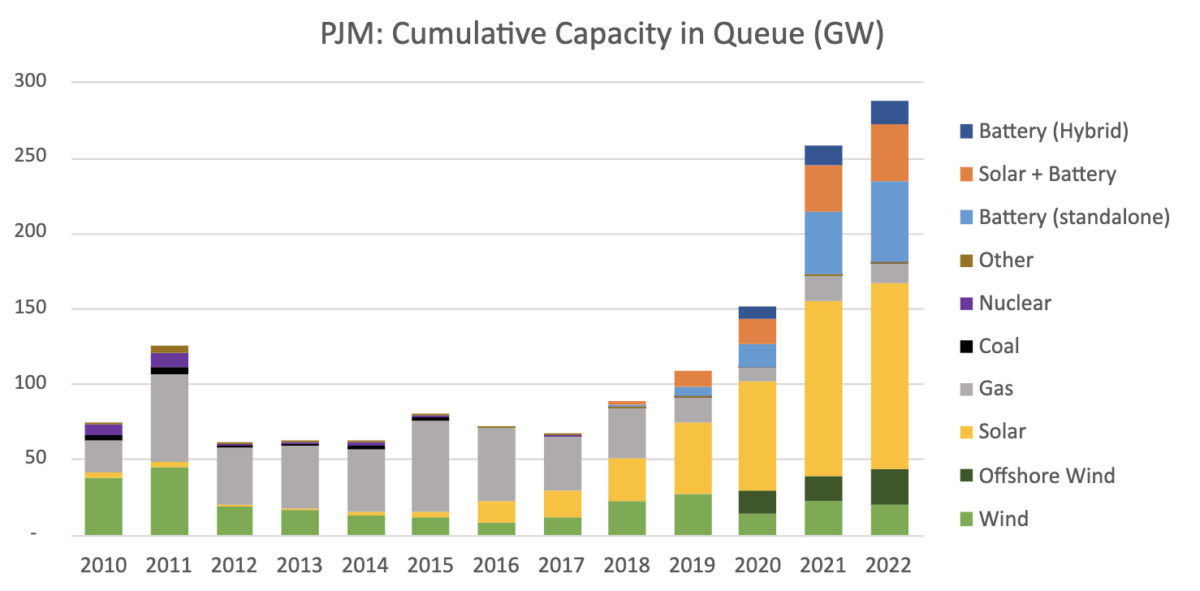The grid operator PJM would not begin processing new interconnection requests until 2026 and then would take two years to complete each interconnection study, under its proposed timelines, the Organization of PJM States, Inc. (OPSI) said in comments to the Federal Energy Regulatory Commission (FERC). Both those timelines are “too long,” the organization said.
Calling for PJM’s timelines to be the “absolute upper limit,” in comments on FERC’s interconnection rulemaking proceeding, OPSI said it supported implementation of PJM’s proposal as “an improvement over the status quo,” and as “critical to reducing the interconnection backlog, ensuring markets remain competitive, and that states are able to achieve their public policy goals.”

But OPSI told FERC that “ideally,” FERC’s final interconnection rule “should increase” PJM’s interconnection request processing speed “and shorten” PJM’s transition to a clustered first-ready, first-served process. The organization, renewing a concern it expressed earlier, said “the possibility that resources entering the queue today would not be able to reach commercial operation until nearly 2030” was “troubling.”
Seven members of OPSI have 100% clean electricity goals, according to the Clean Energy States Alliance: the District of Columbia, Illinois, Maryland, Michigan, New Jersey, North Carolina and Virginia. The organization’s other members are Delaware, Indiana, Kentucky, Ohio, Pennsylvania, Tennessee and West Virginia. All member states are wholly or partly in the service area of PJM.
OPSI’s comments were unanimously supported by its members.
Backlog
PJM has a backlog of interconnection requests  totaling more than 250 GW of renewables and storage, as shown in the featured image above, across more than 2,700 projects, as shown in the nearby table prepared by Lawrence Berkeley National Laboratory (LBNL) for a presentation to OPSI, alongside the numbers for other grid regions.
totaling more than 250 GW of renewables and storage, as shown in the featured image above, across more than 2,700 projects, as shown in the nearby table prepared by Lawrence Berkeley National Laboratory (LBNL) for a presentation to OPSI, alongside the numbers for other grid regions.
PJM has suspended for two years its review of 1,200 projects in its interconnection queue, mostly solar power.  Annual capacity additions to PJM’s queue this year are running well below last year’s additions, as shown in the nearby image from LBNL. In its presentation to OPSI, LBNL asked whether this year’s decline may be due to PJM’s announced queue reform.
Annual capacity additions to PJM’s queue this year are running well below last year’s additions, as shown in the nearby image from LBNL. In its presentation to OPSI, LBNL asked whether this year’s decline may be due to PJM’s announced queue reform.
In the PJM grid region, according to a Bloomberg News report last month, “24% of fossil-fired generators that applied since 2017 received approval to connect to the grid, compared to a 0.4% rate for renewable projects, according to BloombergNEF.”
Cluster studies
OPSI said it supports cluster studies for interconnection requests to speed processing and to minimize the first mover disadvantage, when a project must pay for a large network upgrade that then benefits later projects. OPSI said FERC should analyze whether a region-wide, annual cluster “in a large region like PJM” could benefit from better defined subclusters, and also evaluate methods to group generating facilities based on “areas of geographic and electrical relevance.”
Annual clustering is superior to PJM’s “less structured proposal that (would) only open new cluster windows after a certain stage of the previous cycle has concluded,” OPSI said. PJM’s approach would “introduce timeline uncertainty” into the interconnection process, it added.
Timelines, batteries
OPSI asked FERC, “if it is clear that a clustered process is more efficient than the status quo process,” to “strongly consider using a clustered process as soon as feasible in the transition” from the traditional serial process, and to “analyze whether the option for interconnection customers to utilize a transitional serial process has the potential to materially delay the transition” to cluster studies.
PJM’s proposed interconnection study timeline of 710 days (about 2 years) compares to FERC’s proposed requirement, including re-studies, that would only take a maximum of 555 days, OPSI said. The organization said it “is optimistic that PJM will be able to continue to trim its interconnection process to at least the timelines” proposed by FERC “and hopefully to an even shorter timeline like those already implemented by other regional transmission organizations.”
The Organization of PJM States’ comments to FERC are available via FERC’s docket search webpage, under docket #RM22-14-000.
This content is protected by copyright and may not be reused. If you want to cooperate with us and would like to reuse some of our content, please contact: editors@pv-magazine.com.








How frustrating! I wonder how much of this might be due to delay tactics to impede solar power expansion because of cozy, money-pocketing, fossil-fuel industry relationships.